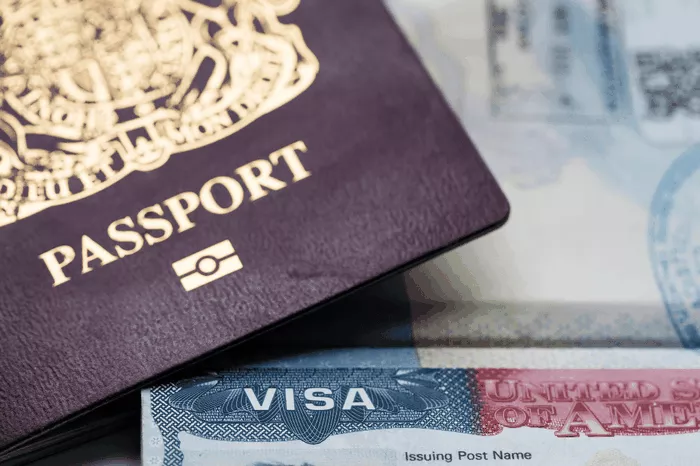In an era marked by increased global migration, proving one’s immigration status is a critical aspect of navigating legal, social, and economic landscapes. Whether for employment, education, healthcare access, or residency, establishing immigration status is a fundamental requirement. However, the process can be complex and daunting for individuals unfamiliar with the intricacies of immigration law. This article aims to provide a comprehensive guide on how to effectively prove immigration status, offering insights into the documentation, procedures, and best practices involved.
Understanding Immigration Status
Immigration status refers to an individual’s legal standing within a country, determining their rights, privileges, and responsibilities. It is typically granted through visas, residency permits, or citizenship. Common immigration statuses include:
1. Visitor Visa: Granted to individuals intending to visit a country for tourism, business, or other short-term purposes.
2. Student Visa: Issued to foreign students enrolled in educational institutions within the host country.
3. Work Visa: Granted to individuals seeking employment opportunities in a foreign country.
4. Permanent Residency: Also known as a green card in some countries, permanent residency allows foreign nationals to live and work indefinitely in the host country.
5. Citizenship: The highest form of immigration status, citizenship grants individuals full rights and responsibilities within a country, including the right to vote and hold public office.
Documentation Required
Proving immigration status often requires a combination of official documents issued by government authorities. The specific documentation may vary depending on the immigration status sought or held. Common documents include:
1. Visa or Permit: A physical document issued by immigration authorities granting permission to enter, stay, or work in a country for a specified period.
2. Passport: A vital travel document that serves as proof of identity and nationality. Passports often contain visas and entry stamps indicating immigration status.
3. Residency Card: For individuals holding permanent residency, a residency card or green card serves as official proof of their status and right to reside in the country.
4. Employment Authorization Document (EAD): Issued to foreign nationals granted permission to work in the host country for a specific employer and duration.
5. Naturalization Certificate: For individuals who have obtained citizenship through the process of naturalization, a naturalization certificate serves as official proof of their citizenship status.
In addition to these primary documents, supplementary evidence may be required to support one’s immigration status, such as proof of financial support, employment contracts, or enrollment in educational institutions.
Procedures for Proving Immigration Status
The process of proving immigration status can vary depending on the purpose and context. However, certain general procedures apply:
1. Documentation Review: Begin by gathering all relevant immigration documents, including visas, permits, passports, and residency cards. Ensure that these documents are current, valid, and readily accessible when needed.
2. Verification of Status: Verify the specific requirements for proving immigration status in the relevant context, whether it be for employment, education, healthcare, or residency. Familiarize yourself with the acceptable forms of documentation and any additional requirements.
3. Certified Copies: In some cases, it may be necessary to obtain certified copies of immigration documents to present as proof. This typically involves submitting original documents to the relevant authorities, who will then issue certified copies with official seals or stamps.
4. Translation and Notarization: If immigration documents are in a language other than the official language of the host country, they may need to be translated by a certified translator. Additionally, certain documents may require notarization to validate their authenticity.
5. Electronic Verification: In an increasingly digital world, many countries offer online portals or databases where employers, educational institutions, or other entities can verify individuals’ immigration status electronically. Familiarize yourself with these systems and ensure that your information is accurately reflected.
6. Legal Assistance: In complex cases or situations involving legal disputes, seeking assistance from immigration lawyers or legal experts may be advisable. They can provide guidance on the relevant laws, procedures, and strategies for proving immigration status effectively.
Best Practices for Maintaining Immigration Status
Once immigration status is obtained, it is essential to adhere to the conditions and requirements set forth by immigration authorities. Failure to do so can result in visa revocation, deportation, or other legal consequences. Some best practices for maintaining immigration status include:
1. Compliance with Visa Conditions: Abide by the terms and conditions of your visa or permit, including restrictions on employment, duration of stay, and reporting requirements.
2. Renewal and Extensions: Stay proactive in renewing or extending your immigration status before it expires. Failing to do so can lead to unlawful presence and jeopardize future immigration prospects.
3. Notification of Changes: Inform immigration authorities of any changes to your circumstances, such as address changes, marital status changes, or changes in employment or educational status.
4. Continued Eligibility: Maintain eligibility for your immigration status by meeting any ongoing requirements, such as maintaining a certain level of income, attending school full-time, or adhering to residency requirements.
5. Criminal Compliance: Avoid engaging in criminal activities that could jeopardize your immigration status, as certain criminal convictions can lead to deportation or inadmissibility.
6. Seeking Legal Advice: If faced with challenges or uncertainties regarding your immigration status, seek guidance from qualified legal professionals who can provide accurate information and advocacy on your behalf.
Conclusion
Proving immigration status is a multifaceted process that requires careful attention to documentation, procedures, and legal requirements. By understanding the types of immigration status, gathering the necessary documentation, following established procedures, and adhering to best practices for maintaining status, individuals can navigate the complexities of immigration law with confidence and ensure their rights and privileges are protected in their host country. Whether seeking employment, education, healthcare, or residency, establishing and maintaining immigration status is essential for building a secure and prosperous future in a new land.


